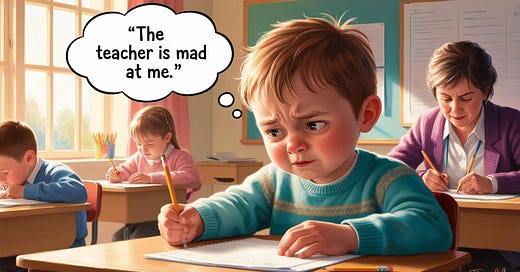Hello,
ADHD children often experience emotions differently than their neurotypical peers. They might feel emotions more intensely, react strongly, or take longer to understand how someone else is feeling. This isn’t a flaw—it’s just how their brain works.
By recognizing and understanding these emotional differences, you can better support your child’s emotional growth and be a better support to them. You can also help them understand themselves.
🔄 Why ADHD Emotional Experiences Can Look Different
New Research shows that neurotypical children ( and adults) tend to recognize and match facial expressions to emotions more quickly than children with ADHD.
ADHD children often experience emotions differently—both their own and others. These differences can show up in several key ways:
Slower to notice emotions in others: Your child might not immediately recognize when someone is sad, frustrated, or upset.
Delayed awareness of their own feelings: They may not realize they’re upset or overwhelmed until the emotion becomes intense.
Difficulty reading emotions: They might misinterpret facial expressions, such as thinking someone is angry when they’re actually tired or distracted.
Once ADHD children do recognize emotions, they often feel them intensely. This can lead to strong reactions that may seem sudden or unexpected to others.
👉 This isn’t a lack of empathy. It’s simply how their brain processes emotional and social cues. Understanding this can help you respond with patience and compassion, guiding your child as they develop emotional awareness and confidence.
🛠️ How to Explain Emotional Differences to Your Child
Children feel empowered when they understand their brains. Here’s a way to explain emotional differences gently and positively:
🗣️ “Your brain notices feelings in its own way – and that’s okay!”
“Some people’s brains recognize how others feel just by looking at their face.”
“Your brain sometimes takes a little more time – and that’s okay.”
“If you’re not sure, the best way to know how someone feels is to ask!”
👉 Try This:
“Faces don’t always tell the full story. It’s okay to say, ‘Are you okay?’ or ‘How are you feeling?’”
“Checking in helps us understand and shows kindness.”
Note: You can use the words neurotypical and Adhd when having these discussions if you are comfortable with those terms.
🌊 Explaining Big Feelings
🗣️ "Sometimes emotions, like anger or sadness, can feel really big—like a wave crashing over you."
Explain: "That’s because your brain feels things deeply, which is a wonderful part of who you are."
Encourage: "Big feelings can feel overwhelming, but we can learn ways to handle them, like taking deep breaths or talking to someone you trust."
💡 Parenting Tips – Supporting Emotional Growth
1. Name and Validate Big Feelings
ADHD children need to hear that their emotions are valid – even when they seem out of sync with the situation.
👉 “I see you’re feeling upset. I know it feels really big right now, and I’m here with you.”
👉 “Your feelings are important, even if they seem stronger than others might expect.”
2. Teach ‘Check-In’ Skills
Encourage your child to pause and clarify when they sense emotional shifts in others.
👉 “It’s okay to ask your friend, ‘Is something bothering you?’”
👉 “Our brain can guess, but asking is the best way to know for sure.”
3. Reframe Emotional Sensitivity as a Skill
Help your child see their emotional depth as a strength, not a weakness.
👉 “You might notice things other people might miss, and that shows how much you care.”
👉 “Your empathy is a gift – even if it sometimes feels overwhelming.”
How This Shows Up in Daily Life
Scenario 1: Misunderstanding Someone’s Expression
Your child sees their teacher frown and thinks, “The teacher is mad at me,” even though the teacher is just concentrating on something.
Scenario 2: Reacting Strongly to Emotions
At a family gathering, your child notices their cousin is upset and suddenly feels the sadness too, so strongly that they start crying as well.
Scenario 3: Noticing Emotions Late
A friend at school looks sad, but your child doesn’t notice until much later. When they finally realize, they feel overwhelmed and unsure how to help.
🌱 Embracing Emotional Diversity
ADHD children experience emotions differently. They can learn to understand their feelings and others’ feelings with support. Parents can build confidence and understanding along the way.
Would you like more tips or tools to support your child’s emotional growth? 😊
Thanks for reading this edition.
Like this newsletter? I’d love you to share it.
You can subscribe, too!
I’m Kristen McClure, a therapist and coach specializing in ADHD through a neurodiversity-affirming lens. With 30 years of experience working with children and adults, I now focus on supporting ADHD and AuDHD women, empowering them to embrace their strengths and thrive.






